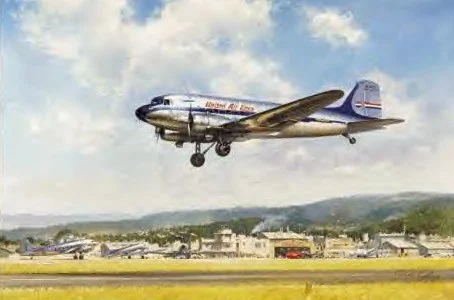https://www.youtube.com/watch?v=VGZ6-isXw-8 .
Introduced in 1934, the de Havilland DH.89 Dragon Rapide was one of the world's first completely 'streamlined' airliners. Designed as a short haul specialist between England and Europe (well, in reality, Scotland, Ireland and France), the plane was powered by two air-cooled inline-6 Gipsy Queen engines, each of them capable of 200 horsepower.
https://www.youtube.com/watch?v=VGZ6-isXw-8
De Havilland Dragon Rapide G-AIDL flight - pilots eye view
https://www.youtube.com/watch?v=kaZ79yexR28
de Havilland airliners, biplanes and monoplanes
https://youtu.be/Q0zHZeNPCMc?t=2m48s
de Havilland airliner aircraft from the 1930s
https://www.youtube.com/watch?v=VGZ6-isXw-8
De Havilland DH 84 Dragon pre flight maintenance
https://www.youtube.com/watch?v=lZLR1FQ-4UU
de Havilland Fox Moth, Dragon Rapide and Dragonfly
https://www.youtube.com/watch?v=MOdOTBAw3lA
DH-89B Dragon Rapide
https://youtu.be/MOdOTBAw3lA?t=1m53s
DH-90 Dragonfly
https://youtu.be/MOdOTBAw3lA?t=2m51s
DH 83 Fox Moth
https://youtu.be/Q0zHZeNPCMc?t=4m37s
https://youtu.be/0W1-y_6Qnfk?t=5m22s
https://youtu.be/MOdOTBAw3lA?t=35s
Underneath the sleek skinned exterior the Rapide is built mainly from lightweight plywood. Up to eight passengers had to be weighed alongside their luggage before they were allowed on.
Brilliantly combining form and function, every detail of this beautiful aircraft is streamlined, making it an iconic aerodynamic pioneer with a range of 578 miles (at a leisurely132 mph). Central London to central Paris took 3 hours and 40 minutes - easily the fastest way to go at the time.
What makes it great… the DH.89 set a new benchmark in streamlining, decades ahead of modern aerodynamics.
Time Warp… A one way ticket to France cost £4 back in the mid 1930s, which equates to around £350 today. So, a bit more than Easyjet, but what a way to travel!
Introduced in 1934, the de Havilland DH.89 Dragon Rapide was one of the world's first completely 'streamlined' airliners. Designed as a short haul specialist between England and Europe (well, in reality, Scotland, Ireland and France), the plane was powered by two air-cooled inline-6 Gipsy Queen engines, each of them capable of 200 horsepower.
https://www.youtube.com/watch?v=VGZ6-isXw-8
De Havilland Dragon Rapide G-AIDL flight - pilots eye view
https://www.youtube.com/watch?v=kaZ79yexR28
de Havilland airliners, biplanes and monoplanes
https://youtu.be/Q0zHZeNPCMc?t=2m48s
de Havilland airliner aircraft from the 1930s
https://www.youtube.com/watch?v=VGZ6-isXw-8
De Havilland DH 84 Dragon pre flight maintenance
https://www.youtube.com/watch?v=lZLR1FQ-4UU
de Havilland Fox Moth, Dragon Rapide and Dragonfly
https://www.youtube.com/watch?v=MOdOTBAw3lA
DH-89B Dragon Rapide
https://youtu.be/MOdOTBAw3lA?t=1m53s
DH-90 Dragonfly
https://youtu.be/MOdOTBAw3lA?t=2m51s
DH 83 Fox Moth
https://youtu.be/Q0zHZeNPCMc?t=4m37s
https://youtu.be/0W1-y_6Qnfk?t=5m22s
https://youtu.be/MOdOTBAw3lA?t=35s
Underneath the sleek skinned exterior the Rapide is built mainly from lightweight plywood. Up to eight passengers had to be weighed alongside their luggage before they were allowed on.
Brilliantly combining form and function, every detail of this beautiful aircraft is streamlined, making it an iconic aerodynamic pioneer with a range of 578 miles (at a leisurely132 mph). Central London to central Paris took 3 hours and 40 minutes - easily the fastest way to go at the time.
What makes it great… the DH.89 set a new benchmark in streamlining, decades ahead of modern aerodynamics.
Time Warp… A one way ticket to France cost £4 back in the mid 1930s, which equates to around £350 today. So, a bit more than Easyjet, but what a way to travel!



